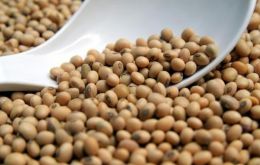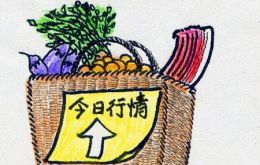MercoPress. South Atlantic News Agency
Tag: Food Price Index
-
Monday, March 19th 2012 - 15:44 UTC
FAO Food price index rose 1% in February but is 10% below a year ago

The FAO Food Price Index rose 1% or 2.4 points from January to February. The Index climbed nearly 2% in January – its first increase in six months. The February increase was mostly driven by higher prices of sugar, oils and cereals while dairy prices fell slightly after a marked rise in January.
-
Monday, February 13th 2012 - 21:00 UTC
FAO Food Price Index up 2% in January, first increase since July 2011

The FAO Food Price Index rose by nearly two percent or four points from December to January, its first increase since July 2011. According to FAO prices of all the commodity groups in the index registered gains last month with oils increasing the most followed closely by cereals, sugar, dairy products and meat.
-
Friday, November 4th 2011 - 08:20 UTC
FAO food price index drops in October but remains higher than in 2010 and volatile

The FAO Food price index dropped to an 11-month low in October, declining 4%, or nine points, to 216 points from September. Nonetheless prices still remain generally higher than last year and very volatile, FAO said.
-
Thursday, October 6th 2011 - 22:10 UTC
FAO anticipates ‘tight’ cereal markets in 2011/12 and lower prices

Despite improved production prospects, world cereal markets are likely to remain fairly tight in 2011/2012, FAO announced this week. Prices on the other hand will tend to decline as a result of softer demand because of worsening economic conditions.
-
Thursday, September 8th 2011 - 22:24 UTC
World food prices hold steady at near record; cereals climb further, says FAO

World food prices remained virtually unchanged between July and August 2011 according to the FAO Food Price Index published Thursday. The Index averaged 231 points last month compared to 232 points in July. It was 26% higher than in August 2010 but seven points below its all-time high of 238 points in February 2011.
-
Monday, July 11th 2011 - 18:17 UTC
“Sweet” sugar futures until the northern hemisphere crop is harvested

Sugar supplies will remain limited until the 2012-13 harvest begins in top producer Brazil, broker FCStone do Brasil said citing futures traded in New York. The rise in sugar price helped push the FAO Food Price Index to 234 points in June, which is 39% higher than a year ago.
-
Saturday, July 9th 2011 - 06:47 UTC
Inflation at its highest level in three years; concerns over food prices and social unrest

Inflation in China has risen to its highest level for three years, despite a series of interest rate rises and curbs on bank lending. Prices in June rose 6.4% from a year earlier, well above the rate for May.
-
Thursday, June 9th 2011 - 04:20 UTC
FAO forecasts world food prices are likely to remain high in 2011 and 2012

Citing dwindling stocks and only small production increases for the majority of crops, a new United Nations report released Wednesday world food prices are likely to remain high for the rest of this year and into 2012.
-
Thursday, May 5th 2011 - 16:37 UTC
FAO April food prices index stable but still 36% higher than in 2010

Food prices remained virtually steady in April after falling in March following eight months of successive increases, FAO announced Thursday.
-
Thursday, April 14th 2011 - 21:01 UTC
More people deeper in poverty as food prices soar 36%, says World Bank

Driven in part by higher fuel costs connected to events in the Middle East and North Africa, global food prices are 36% above their levels a year ago and remain volatile, pushing people deeper into poverty, according to new World Bank Group numbers released Thursday.
